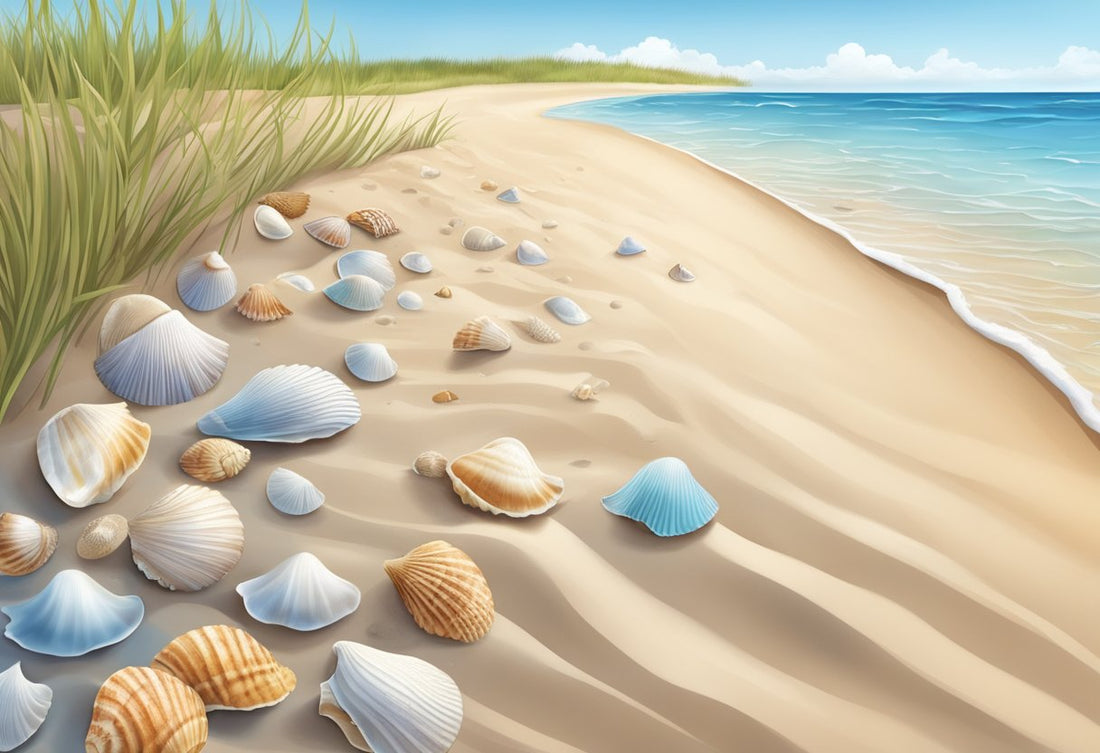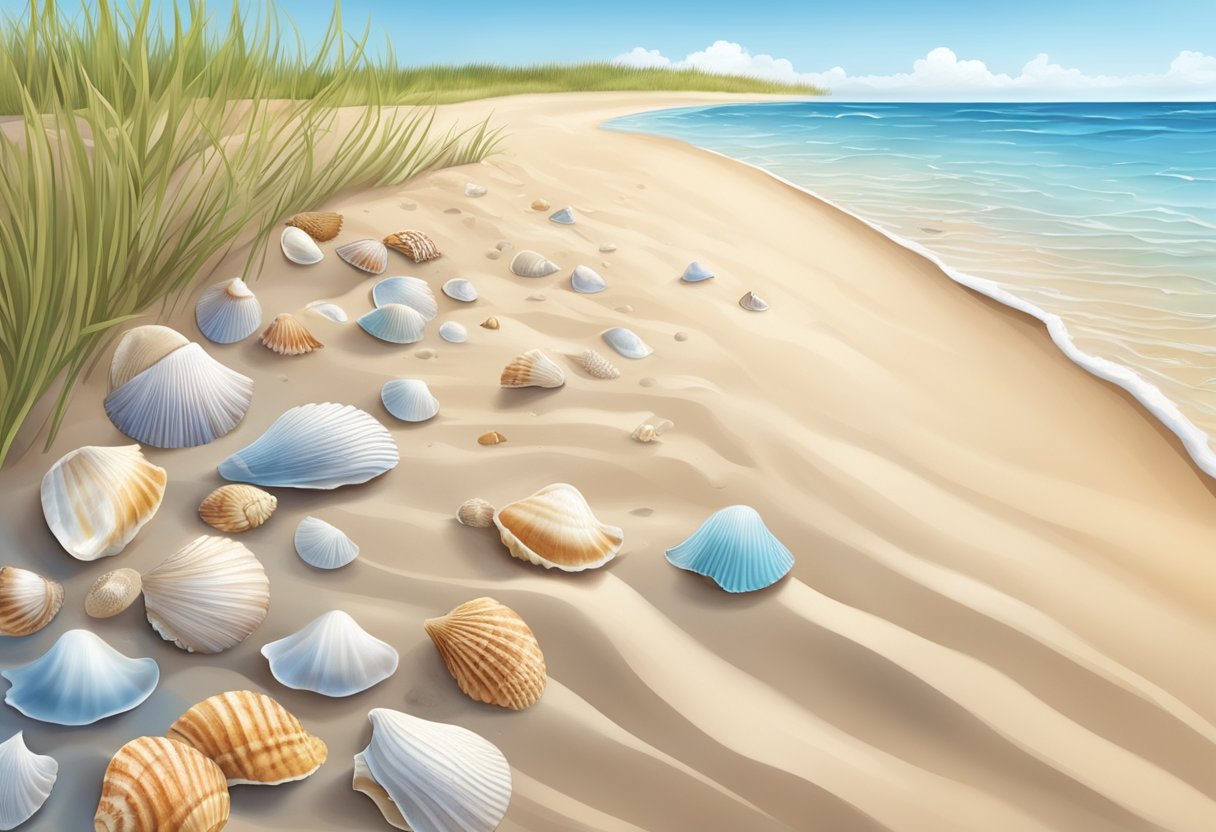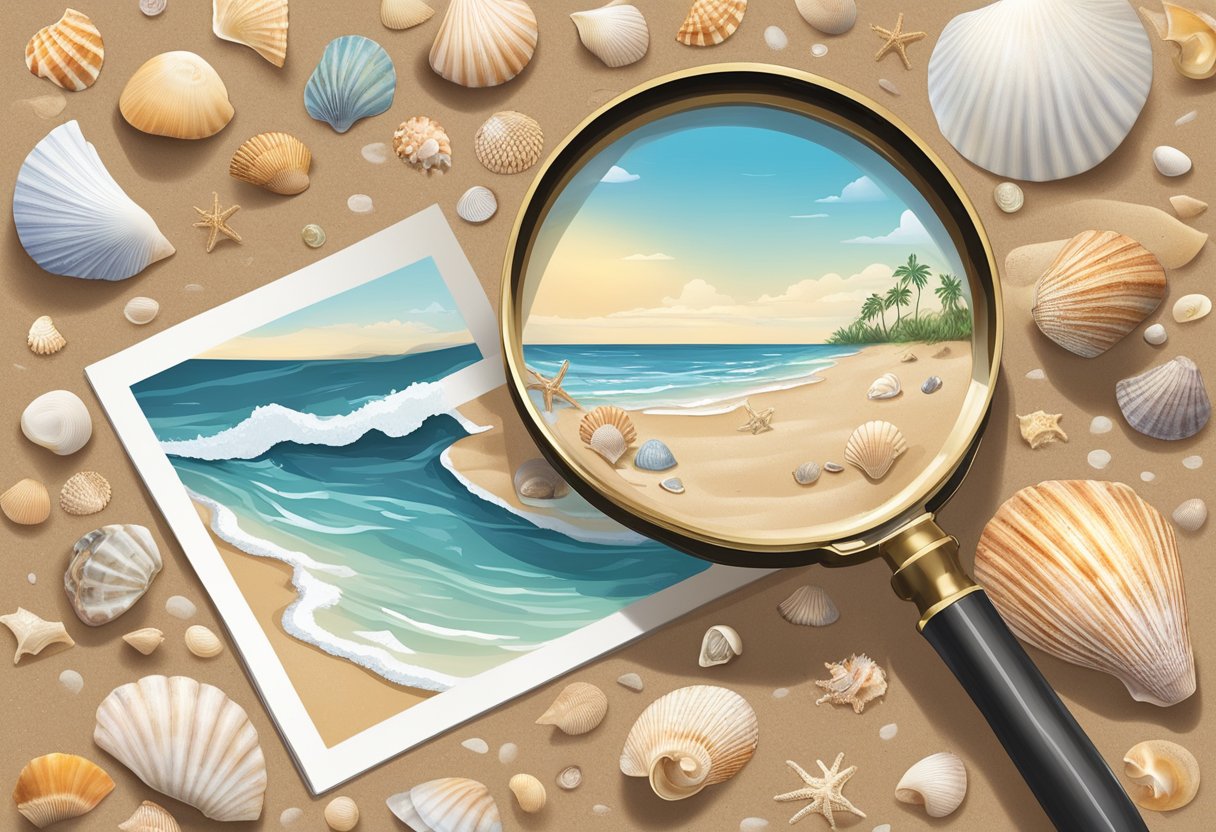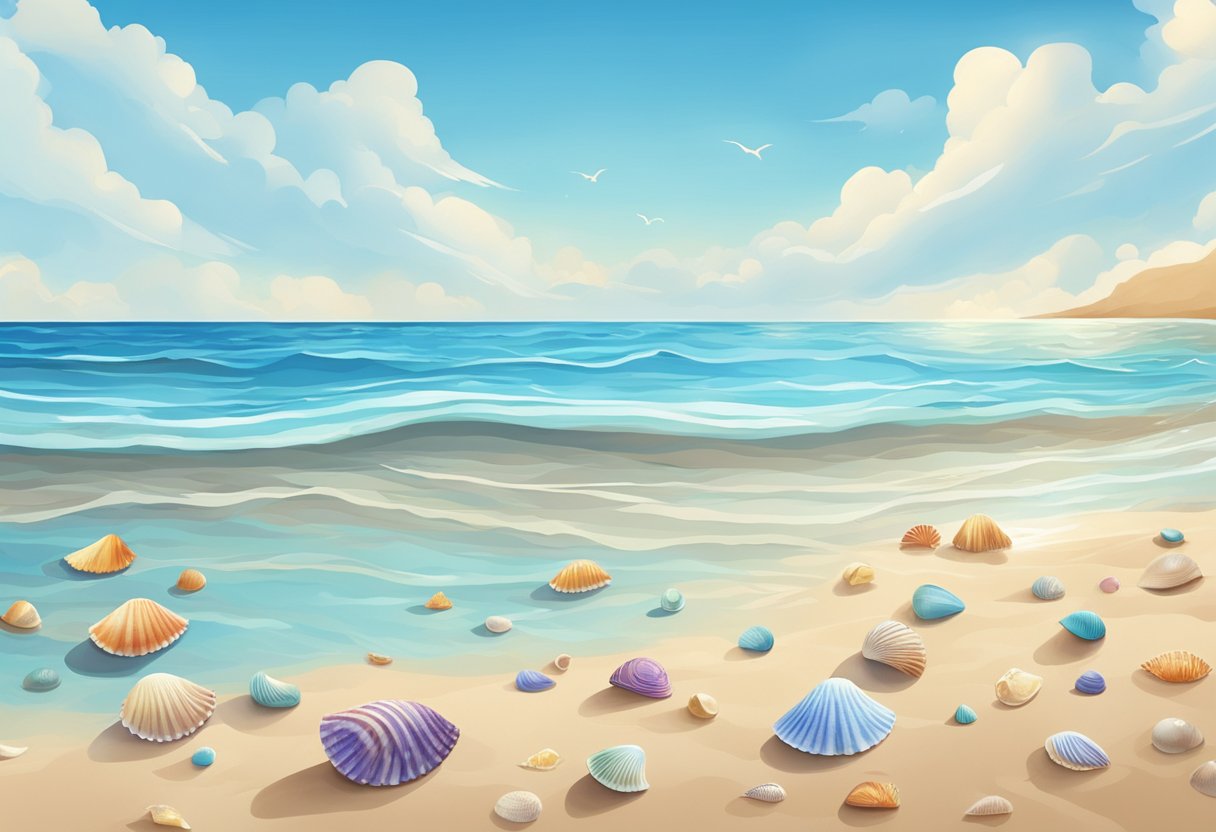
Beginner's Guide to Seashell Collecting: Tips and Tricks for New Collectors
Share
Seashell collecting is a rewarding and fascinating hobby that offers countless opportunities to explore the beauty of nature. From intricate patterns to unique shapes, each seashell tells a story of the ocean. This guide will help beginners learn the basics of collecting, cleaning, and displaying seashells, making it easy to get started.

To begin your seashell collection, it's important to know where and when to search for these coastal treasures. The best time to find seashells is during low tide when the water recedes, and early morning walks on the beach can often yield the most pristine finds. Local shores and less crowded beaches are also ideal spots for finding a variety of shells.
Once you've gathered a collection, keeping the shells clean is crucial. Boiling them in a mix of vinegar and water or letting them soak in water can help remove dirt and debris. After cleaning, rubbing the shells with baby oil or mineral oil will give them a shiny surface, perfect for displaying in jars or crafting into decorative items.
Understanding Seashells
Seashells are the protective outer coat of marine animals called mollusks. They come in various shapes, sizes, and colors, each species having its unique features.
Seashell Biology
Seashells are formed by mollusks, which are soft-bodied animals. The shell serves as a protective barrier against predators and harsh environmental conditions. Mollusks include familiar species such as snails, clams, and octopuses.
Mollusks secrete calcium carbonate from their mantle. This mineral hardens to form the shell. Seashells grow as the mollusk ages, adding new layers.
Regions like the opening (aperture) and the top (apex) are key parts of a shell. Understanding these features can help identify species.
Seashell Classification
Seashells are classified into two main groups: gastropods and bivalves.
Gastropods, like snails, have a single, often spiraled shell. They are the most commonly collected shells. Examples include conchs, whelks, and cowries.
Bivalves have two hinged shells. They enclose the mollusk's body. Common examples include clams, oysters, and scallops.
Seashells are further categorized by their shape, size, color, and habitat. This classification helps collectors and researchers identify and study different species.
Equipping for Shelling

To successfully collect seashells, you'll need the right tools and attire. Proper equipment helps make your shelling trips more efficient and enjoyable.
Essential Tools
A successful shelling trip often starts with a shelling bag. This bag, worn over the shoulder, keeps hands free and stores collected shells. Sand dippers are also useful; they help sift through sand and water to find hidden treasures.
For cleaning shells, consider a combination of boiling, soaking in a vinegar solution, and using brushes. Boil your shells in water for a few minutes to loosen debris. A toothbrush or dental pick can then be used to gently clean shells.
A field guide can help identify various types of shells. Knowing what you're looking for improves the quality of your collection.
Don't forget a small shovel or trowel. These tools make digging in the sand easier, especially for deeply buried shells.
Choosing the Right Apparel
Proper attire keeps you comfortable and protected while shelling. Water shoes are essential; they protect feet from sharp objects and provide good traction on slippery surfaces.
A wide-brimmed hat and sunscreen protect against sunburn. Even on cloudy days, UV rays can be harmful during long hours at the beach.
Wearing lightweight, breathable clothing keeps you cool. Fabrics like cotton or moisture-wicking materials are ideal. Consider long sleeves and pants for extra sun and insect protection.
Gloves might be needed for handling rough or sharp shells. They offer extra grip and safeguard your hands.
Pack a windbreaker or light jacket. Coastal weather can change quickly, and staying warm helps you focus on your shell collecting.
Best Practices While Collecting

When collecting seashells, it's important to follow ethical guidelines and use effective techniques to ensure a productive and respectful experience. This means choosing the right places and times to collect and respecting marine life and habitats.
Ethical Collecting
Respecting marine environments is crucial. Collectors should only take empty shells, leaving those with living creatures alone. This helps maintain the local ecosystem.
It's also essential to avoid removing large quantities of shells from any one location. This prevents the depletion of natural resources. Remember, many places have regulations regarding shell collecting, so it's important to research local laws and obtain any necessary permits.
Ethical collectors should also avoid collecting shells from protected areas such as reserves or national parks. These areas often have strict rules to protect wildlife and habitats.
Techniques for Finding Seashells
The best times to find seashells are during low tide and after storms.These conditions often bring more shells to the shore. Collectors should walk along the high tide line, which is where many shells are deposited.
Using a small net or a sieve can help sift through sand to reveal hidden shells. It's also beneficial to wear water shoes to protect feet from sharp objects and to wade into shallow waters for shells that haven't yet reached the shore.
Exploring different beaches can increase the variety of shells found. Some locations are known for their unique or abundant shell offerings, so doing some research and planning trips to prime spots can be very rewarding.
Cleaning and Preserving Seashells
Discover the best methods to clean your seashells and techniques to help preserve their beauty. From using simple household items to ensuring shells stay vibrant and undamaged, clarity is key in these processes.
Cleaning Methods
To clean seashells effectively, start by rinsing them in fresh water to remove sand and debris. For tougher grime, use a toothbrush to gently scrub the surfaces. If the shell has lingering organic material, prepare a bleach solution mixing 1 part bleach to 10 parts water. Soak the shells for a few hours, but be mindful that this can weaken delicate shells.
Another method involves boiling the shells. Bring water to a boil, then immerse the shells for a few minutes. This not only loosens dirt but also helps to sterilize them. For an added touch, rub baby oil or mineral oil on the shells once they're clean and dry to enhance their shine.
Preservation Techniques
After cleaning, thoroughly air-dry the shells. This step is crucial to avoid mold and other issues. Once dry, apply a thin layer of mineral oil or baby oil to maintain the shell's natural luster. For long-term preservation, consider using shellac. This will not only add shine but also protect the shell from further deterioration.
When displaying your seashells, avoid direct sunlight. Prolonged exposure can fade their colors. Instead, choose shaded or indoor display spaces. If storing them, ensure they're kept in a cool, dry place. Using soft padding like cotton or tissue paper in storage containers can help prevent cracking or chipping.
Organizing and Displaying Your Collection

Keeping your seashell collection organized and well-displayed can make appreciating your finds even more enjoyable. Catalog your shells to keep track of each piece, and explore different display options to showcase their beauty.
Cataloging Your Seashells
Cataloging helps keep your collection orderly. Start by creating a system to record details about each seashell. Labels can include information like the name, date, and location of where you found each shell. This helps in remembering the context of your collection.
Another way to catalog is by using a notebook or computer database. A notebook can have pre-designed templates to fill in details about each shell. For a digital option, set up a simple spreadsheet with columns for the shell type, date found, and any notes. You can add photos to this digital log to visually capture details.
Display Options
Displaying seashells turns your collection into a visually appealing decor. Glass containers like jars or vases offer a classic way to showcase shells. The transparency of glass allows the shells to be visible from multiple angles. Arrange the shells by size or color to add visual interest.
Shadow boxes are another great option. These can be mounted on walls and protect the shells from dust. Arrange shells in groups or patterns to create a captivating display. For a more organized look, consider using an adjustable bamboo utensil organizer. It keeps different types of shells separated and easy to access.
For those who enjoy crafts, creative displays like DIY picture frames or ornaments can be made using hot glue and simple materials. This adds an artistic touch to your home while preserving your seashells in a fun way.
Advancing Your Seashell Collection
Once a beginner has mastered the basics, the next steps involve expanding to rare specimens and connecting with a community of fellow collectors.
Expanding to Rare Specimens
Diversifying a seashell collection can bring excitement and challenge. Rare specimens add value and uniqueness. One effective method is to research and plan trips to beaches known for rare shells. Books and online resources can guide collectors on where to find these treasures.
Collectors should also consider purchasing rare shells from trusted dealers. This helps to acquire specimens that are difficult to find. It's crucial to verify the authenticity and origin to ensure ethical sourcing. Cataloging each rare specimen with details on location and features adds credibility and insight into the collection.
Ensuring proper storage and care for rare shells is important. Temperature, humidity, and lighting affect the condition of these delicate items. Using display cases and protective coverings can preserve their beauty.
Joining Collector Communities
Being part of a collector community offers learning and networking opportunities. Online forums and social media groups are easily accessible platforms where collectors can exchange tips, photos, and advice.
Local clubs and organizations often host meetings, workshops, and exhibitions. Attending these events helps build relationships with other enthusiasts and opens doors to new collecting opportunities. The insights gained from experienced collectors can be invaluable for advancing one’s skills.
Collectors can also subscribe to newsletters and journals that cover seashell varieties, conservation efforts, and upcoming events. This keeps them updated on trends and new findings in the realm of seashell collecting. Joining a community enhances the collecting experience, making it more rewarding and enriching.
Frequently Asked Questions

Seashell collecting can be a fascinating and enjoyable hobby. Knowing what you'll need, recognizing common shells, and understanding the best practices can help you get started.
What materials do you need to start collecting seashells?
A good mesh bag or bucket is useful for collecting shells. A small shovel can help dig around in the sand. Gloves are helpful to protect your hands. Having reference books or apps can aid in identifying different types of shells.
What are some common types of seashells for beginners to recognize?
Beginners might start with easily recognizable shells such as the Scallop, Clam, and Cone shells. Another common type is the Lightning Whelk, which is spiral-shaped. The Olive shell, which is smooth and shiny, is also fairly easy to find.
How do you clean and preserve collected seashells?
To clean seashells, soak them in a solution of bleach and water for a few hours. Another method involves boiling the shells for a few minutes. Let them dry completely before storing. Applying baby oil or mineral oil can give them a shiny finish and preserve their color.
Where are the best locations to find a variety of seashells?
Beaches with rocky shores often have a good variety of shells. Low tide is usually the best time to hunt for shells. Popular seashell collecting spots include Florida's Sanibel Island and New Jersey's Cape May.
What are the legal and environmental considerations when collecting seashells?
Check local regulations before collecting, as some areas have restrictions. Only collect empty shells to avoid harming live creatures. Be mindful of the environment by not disrupting habitats and leaving plenty of shells for others to enjoy.
What are the tips for identifying rare or valuable seashells?
Invest in a good reference book or use mobile apps to help identify rare shells. Pay attention to unique shapes, patterns, and colors. Networking with other collectors and joining local or online collecting groups can also provide insight and advice.